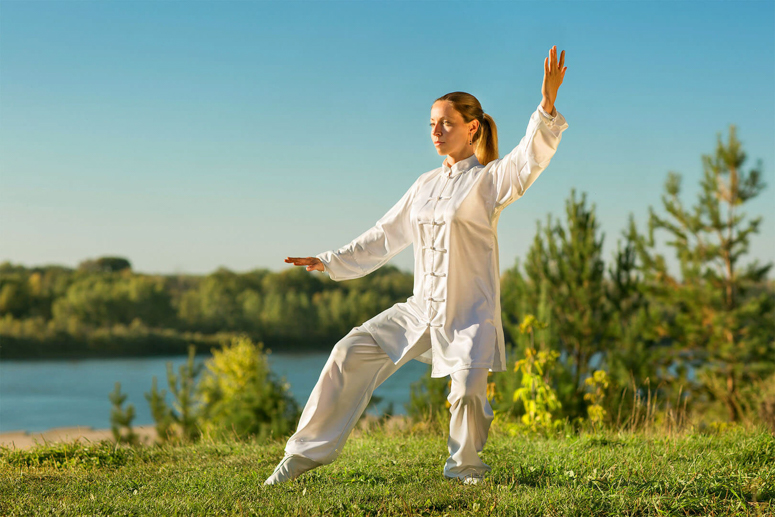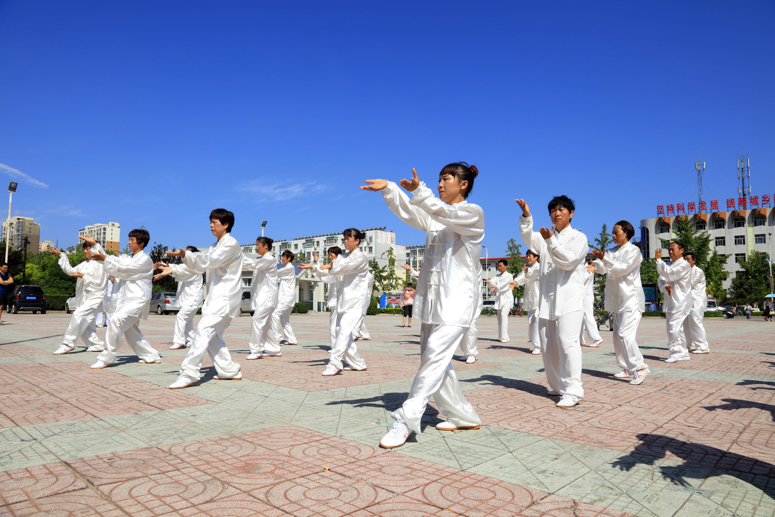Qigong gymnastics is an integral part of life in ancient China. In our time, the practice of qigong gymnastics has resumed, it is practiced not only in eastern countries, but also on other continents. The trend of Falun Gong, or Falun Dafa, has become quite popular, which in fact is a new spiritual teaching spun off from ancient practices. Although it is considered heretical in China, outside of China, Falun Dafa is actively practiced and is even more popular than traditional qigong.

What is qigong
The practice of qigong exercises has its origins in the mists of time and is inextricably linked with the Taoist teachings. Some also combine it with the concept of Confucianism, but this is more of a delusion that occurs due to ignorance, coming from the combination and misinterpretation of the concepts of Taoism and Confucianism. By their nature, both teachings can be called spiritual, and both of them were formed in the vastness of ancient China, however, despite all their seemingly similar goals, namely the conduct of a highly moral life, methods and understanding of morality, they are still fundamentally different.
We will not go into the details of each of these teachings, but, talking about qigong, it should be noted that this spiritual practice (it is primarily spiritual, and secondarily physical and energetic) is directly related to the concept of "Tao", proclaimed in Taoism.
Taoism was formed around the same time as Buddhism. It is difficult to say which direction actually came first, but the interesting fact is that both Buddhism and Taoism focus on moving along the middle path. The Path of Tao is the middle path that the Buddha speaks of. Qigong practice is following the path of the Tao. For those who are interested in the further fate of the interaction between Taoism and Buddhism, one should pay attention to such a phenomenon as Zen Buddhism. This fusion and a new variety of Buddhism originated in Japan, and it is based on Taoism and Buddhism.
Qigong gymnastics: its difference from yoga exercises
The etymology of the word "qigong" goes back to two Chinese characters: "qi", which means 'energy', and "gong" - 'action, work'. Thus, qigong is energy work. Energy should be understood not as a typically material substance, like electricity, but rather as prana.
In general, in the opinion of the author of this article, prana and qi are essentially phenomena of the same order. Qi also permeates everything. Just as the universe is filled with prana, qi fills the so-called living and inanimate nature. During practice, the followers of qigong gymnastics, like practitioners of kundalini yoga, raise the qi energy, transfer it from the lower dan tian to the higher dan tian and vice versa. The very concept of energy centers "dantian" is very similar to the system of chakras - energy funnels, which are widely represented in the yogic tradition.
However, we cannot say that qigong exercises are a complete analogue of the yoga complex. Yoga, in contrast to qigong (regardless of which component we are talking about, static or dynamic exercises), is in many ways more demanding on the initial physical preparation of the practitioner. Qigong exercises do not require as much attention, for example, stretching or twisting exercises, strength exercises. There are quite difficult exercises in qigong that need to be held for a long time, they are static, but they can hardly be compared in general with the exercises of the yoga complex.
Secondly, if in yoga exercises the healing effect is achieved due to changes in the physical position of the body, in its intricate turns, bends and deflections, then in qigong exercises the position of the body is not so fundamentally important. In qigong gymnastics, attention is paid to the feeling of energy passing through the body, inside and out.
In order to accelerate the appearance of real sensations in the body, visualization is used at the initial stages. However, later, when the practice has been worked out, help from visualization exercises is not required, and it is even recommended to stop it as soon as possible, because visual images begin to interfere with the real feeling of the passage of qi energy. On the other hand, chi energy should not be perceived only as a certain substance that needs to be felt physically. Qi is a spiritual component, therefore, at more advanced stages, adepts of this gymnastics cultivate spiritual qi.
Qigong exercises as a meditation practice
Qigong exercises are both general strengthening in nature and are directly related to martial practices, and are almost directly related to the martial arts of wushu. As for qigong, it has such a sub-branch - taijiquan, or in translation 'fist of the Great Limit'. This is largely a martial art, however, in order to start practicing it, no special training is needed. Like other types of martial arts, taijiquan is, first of all, work with energies.
Continuing the topic of comparing the practice of qigong with yoga exercises, it should be noted that, just like in ashtanga yoga, there are many exercises in the qigong complex that are somehow related to meditation practices. But even if you do not single out these exercises in a separate group, in general, the practice of qigong is nothing more than meditation. When a practitioner follows the direction of energy in the body - what is this if not the practice of conscious attention?
It can be said that at the initial stages such attention is a manifestation of the practice of dharana, and with a more in-depth study of the techniques, the exercise will certainly outgrow only the physical or energy component and enter a new level of awareness practice through meditation.
The following moment of the practice of observing the flow of qi energy is interesting: initially it is understood that the student represents the flow of qi, thereby initiating its movement through the body, but then the energy itself “leads” attention after itself. It turns out that initially it should be allowed to manifest itself, and then, on the contrary, follow it, or rather, along with it.
It is a widely known fact that when attention is "bifurcated", i.e. fixed with an equal share of intensity on two objects or ideas at the same time, then the very effect of stopping thoughts occurs. No need to try in vain to stop them by willpower. It is enough to resort to this simple practice to find out what the state of thoughtlessness is.
So in the exercises of the qigong complex - observation of the qi energy itself becomes a meditation practice. Attention is focused both on the state of one's own physical body, and on the sensation of qi energy passing through it. This implies the fact that qigong exercises have a very beneficial effect on the health of the body.
qigong for life
Qigong is a healing practice. It is no coincidence that it is also called “qigong for life”. It is noticed that the positive impact of the practice is felt after the regular performance of qigong for a fairly long period of time. So, after the research, scientists have found that the energy practice of qigong has a very positive effect on the state of the brain. Both older people and a group of young practitioners showed improvement in memory and brain function in general.
For those who are worried about the state of the cardiovascular system, qigong is also very favorable:
- pressure returns to normal;
- the heartbeat stabilizes;
- there is an opening and purification of the ducts of blood vessels;
- depressive states pass, mood is leveled;
- the person as a whole begins to live more consciously.
The positive effects for the physical body and psychological state of a person from doing qigong gymnastics could be listed for quite some time, but the reader must have already understood that the positive effect of qigong is directly related to the fact that one way or another during the implementation of the complex exercises practiced meditation. It can be of different types: both static, with or without the inclusion of an object, and dynamic. The healing effect of meditation practice has been known for a long time, and now scientific research only confirms and scientifically substantiates the incredible results that practitioners observe as a result of qigong practice.
You can read about why meditation is important, what is its healing effect, what is its meaning and what is its effect on the human body, in special articles posted on the site, but for now we will return to the topic of qigong as a practice of rebirth to life.
Why do so many people around the world choose qigong as their energy practice? Due to the relative ease of exercise, it is accessible to people of all ages. Qigong does not put forward any rigid conditions for doing the practice. Of course, regular practice is implied, but in general, the decision on how much and when to practice is left to the practitioner.
Now we are not talking about the martial arts themselves, which in one way or another are based on the technique of working with energies. Qigong for ordinary people does not impose any big prohibitions, does not burden with strict rules. This is its attraction to many thousands of practitioners around the world.
Perhaps our readers will be interested in the ancient Chinese practice of qigong, and they will begin to practice it. Why not? However, for those who would like to develop harmoniously, both spiritually and physically, it may be worth paying attention to yoga practices, because yoga, like qigong, has stood the test of time. She also pays great attention to work with energies, but at the same time such work is carried out in combination with the performance of physical exercises, asanas.










